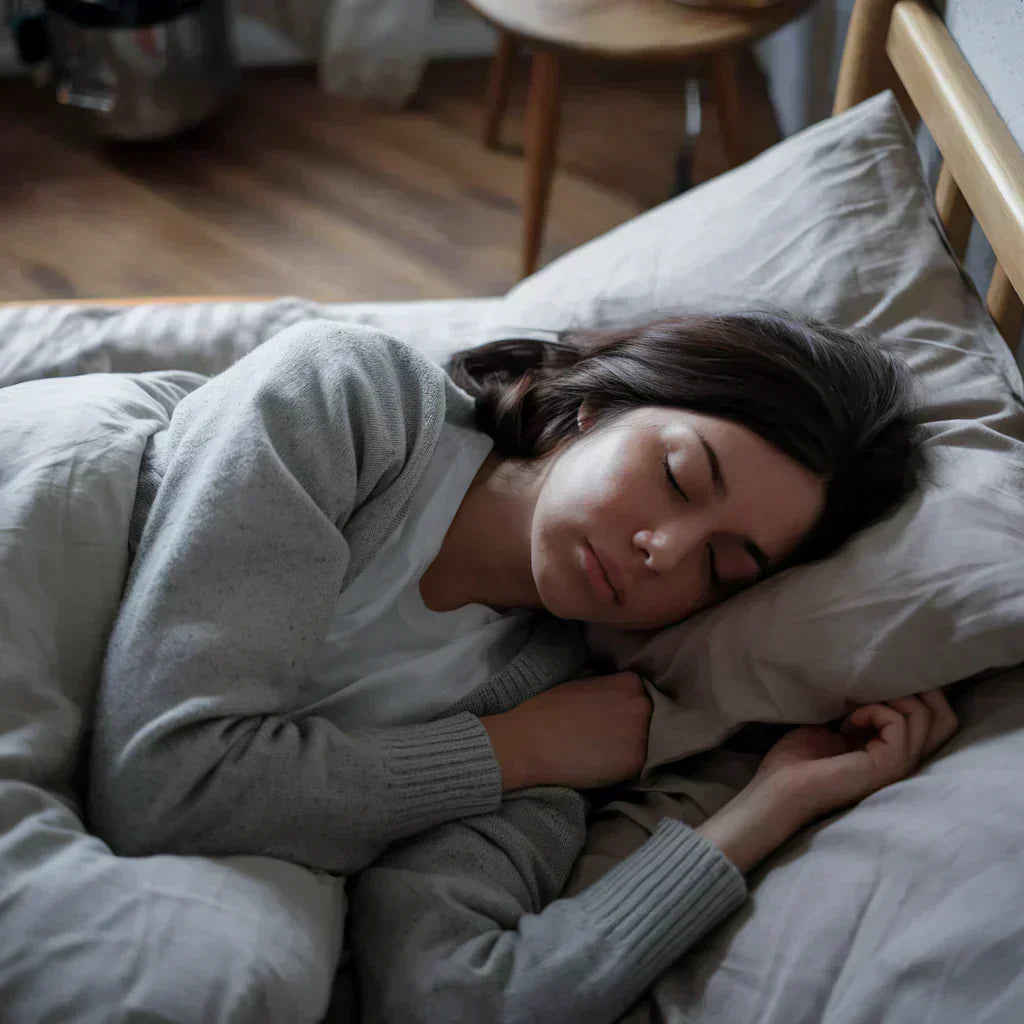66% to 75% of people suffer from lower back pain or backache at least once in their lives. In France, 7 out of 10 people suffer from back pain, regardless of age, with 84% of young people reporting having already experienced back pain. This is why it is important to prevent back problems by adopting a good sleeping position when dealing with back pain.
Importance of sleeping position
Influence of sleeping position on spinal alignment
Sleeping position has a significant impact on maintaining spinal alignment. When you adopt a good sleeping position, your spine maintains its natural curves, reducing pressure on the intervertebral discs and ligaments. For example, when sleeping on your back, you can place a pillow under your knees, and when sleeping on your side, it is recommended to place a pillow between your knees to help maintain a good sleeping position without back pain. A good sleeping position promotes better blood circulation and allows muscles to relax properly, contributing to restful sleep.
Consequences of poor sleeping position on back pain
Poor sleeping posture can have detrimental effects on your back. When your spine isn't naturally aligned, your muscles have to compensate, resulting in stiffness when you wake up in the morning. An improper sleeping position can also put excess pressure on your nerves, creating serious back problems or worsening existing back problems. If you have back pain along with other symptoms and want to know if your back pain is serious, check out our article: How to Tell if Back Pain Is Serious.
Positions to avoid
There are certain sleeping positions that should be avoided when dealing with back pain to avoid aggravating back pain. These include:
- Stomach position : Sleeping in the stomach position forces the natural curvature of the spine and can put excessive strain on the neck and lower back. This can cause neck pain.
- Starfish Position : Although the starfish position may seem comfortable, sleeping with your arms above your head can cause shoulder and neck pain.
- Fetal Position : The fetal position has several benefits, however a curled version of the side position, where the knees are pulled too high towards the chest, can cause lower back pain and disrupt your deep breathing.
To reduce your risk of back pain and improve the quality of your sleep, try to avoid these sleeping positions.
The best positions for sleeping with back pain
Position on the back
Lying on your back is one of the best sleeping positions for back pain. Sleeping on your back helps distribute your body weight evenly and maintains natural spinal alignment. For added comfort, you can place a pillow under your knees to reduce pressure on your lower back.
Side position

To sleep with back pain, you can adopt the side position; this position helps maintain the alignment of your hips, spine, and pelvis. For added comfort, we recommend placing a pillow between your knees.
Additionally, you should use a pillow thick enough to fill the space between your mattress and your head, to avoid poor neck posture and neck pain.
Fetal position
The fetal position is also an ideal position for sleeping with back pain. This position involves sleeping on your side with your knees slightly bent toward your chest. This position helps reduce the curvature of the spine and relieve tension.
The best positions for sleeping with back pain are supine, side lying and fetal position, they help reduce pressure on your back and promote a good night's sleep.
Tips and advice for relieving back pain while sleeping
In addition to adopting a good sleeping position for back pain, there are several tips to relieve your back pain before going to sleep.
Using cushions for better support
Pillows can be your ally when sleeping with back pain. If you sleep on your back, place a pillow under your knees; if you sleep on your side, place a pillow between your knees.
Choosing a mattress and pillow
Choosing the right mattress and pillow is essential for sleeping with back pain. Choose a mattress that's not too firm and offers good support , such as a memory foam mattress. When it comes to pillows, it's best to choose one that keeps your head aligned with your spine.
Adjusting posture while sleeping
Your sleeping position impacts your back.
Always try to keep your back straight, spine aligned, and avoid twisting. We recommend opting for the three best sleeping positions for back pain: the supine position, the fetal position, and the side position. Of course, you don't have to stay in just one position; you can alternate between them while you sleep.
Hot bath, hot water bottle, and other remedies


A nice warm bath with Epsom salt, a hot water bottle on the painful area(s), and other remedies can help relieve your back pain before bed. Don't hesitate to check out our article: Grandma's Remedies for Back Pain, Natural and Effective.
By incorporating these tips into your sleep routine, you can significantly reduce back pain and enjoy restful sleep.
Ultimately, by adopting good posture for sleeping with back pain, using a suitable mattress and pillow, and gentle, natural tips such as hot baths or hot water bottles, you can significantly reduce your back pain and improve your sleep.












